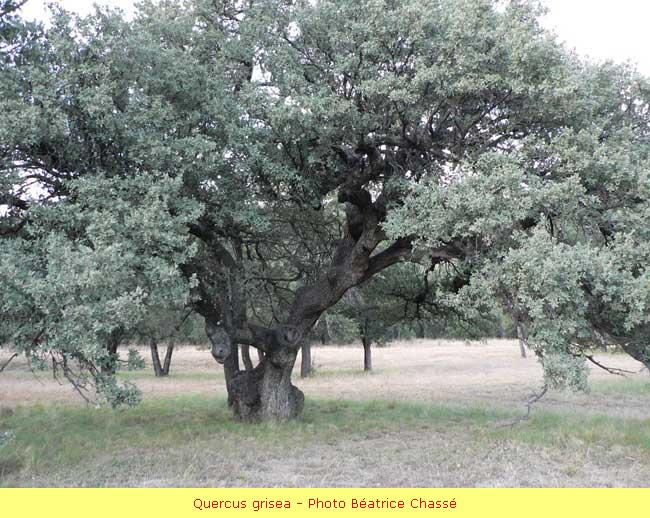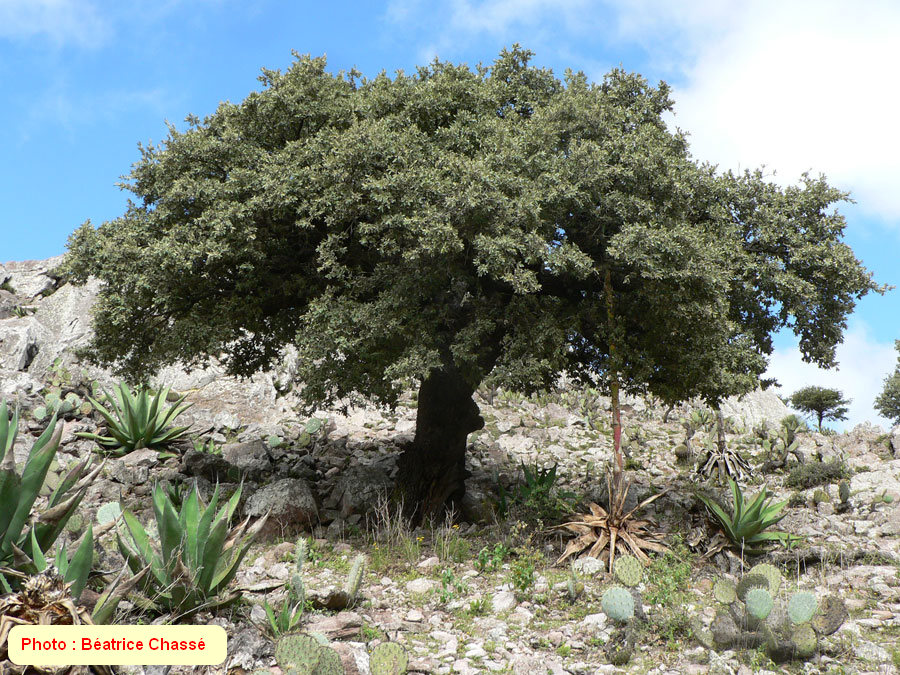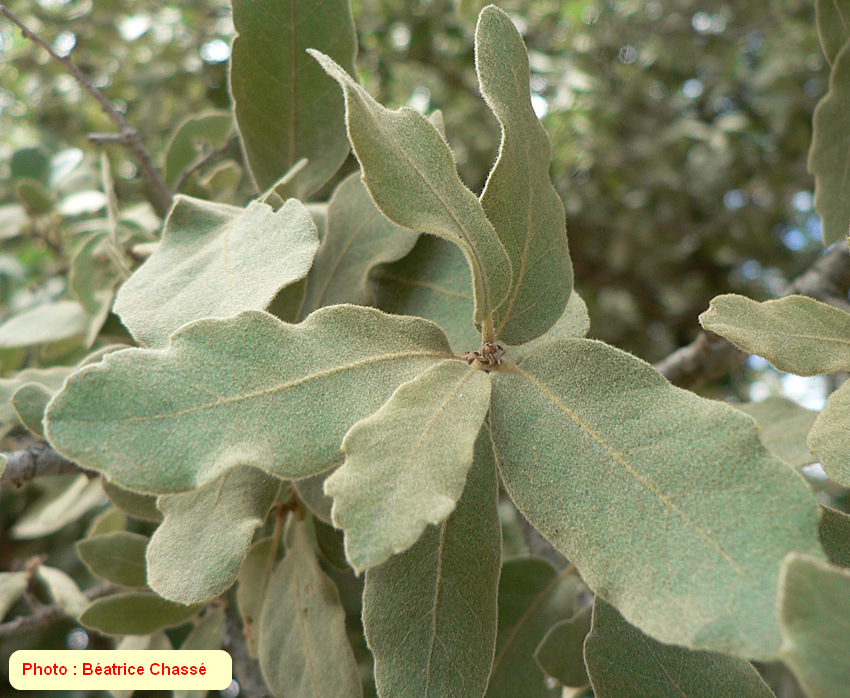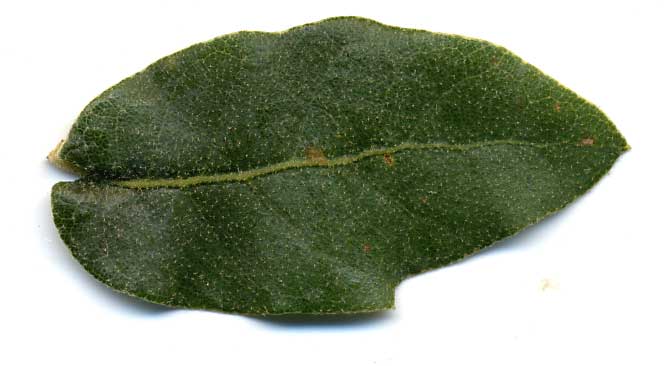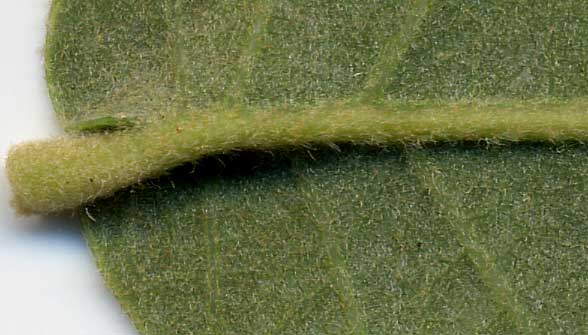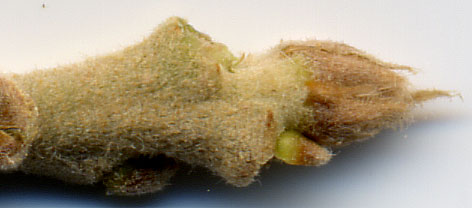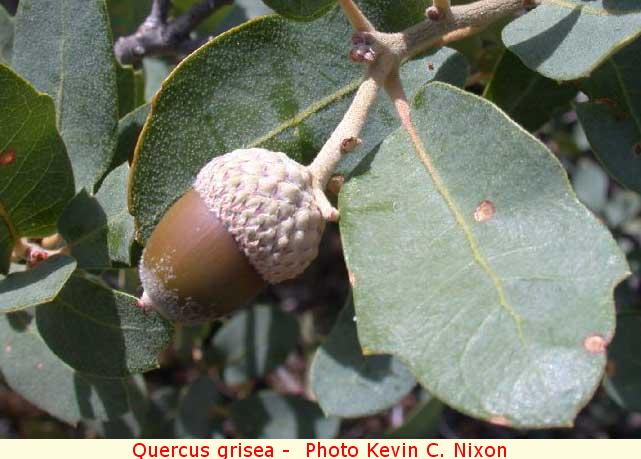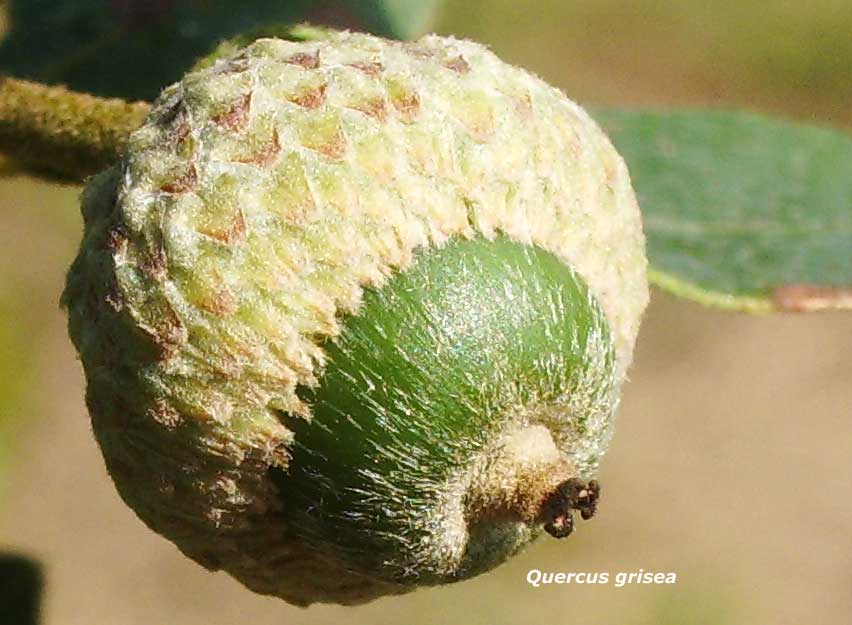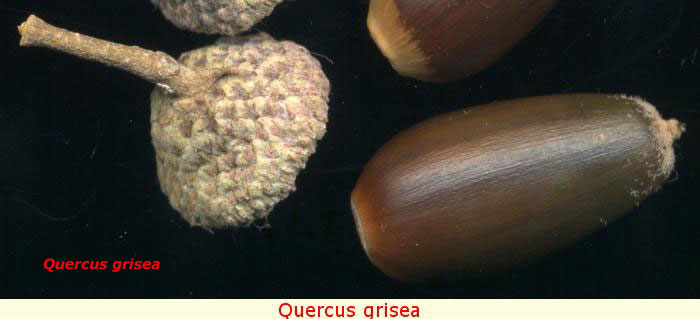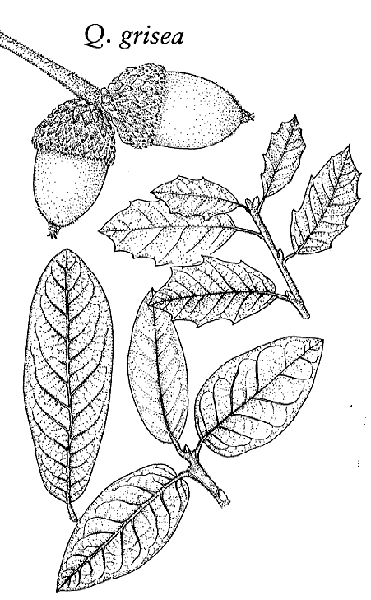| Quercus grisea | |
| Author |
Liebm. 1854 Overs. Kongel. Danske Vidensk. Selsk. Forh. Medlemmers Arbeider 1854: 171 Diagnosis here |
| Synonyms | undulata Torr. var.
grisea (Liebm.) Engelm. 1877 oblongifolia Coult., not Torr. 1853, nor R.Br. ter 1871 |
| Local names | scrub
oak, gray oak ; mountain white oak ; |
| Range | Southwest
Texas; North and Center of Mexico; 1500-2700 m; |
| Growth habit | 4-7
m, sometimes to 10 m, but smaller in cultivation; trunk short, 10-30 cm
wide; |
| Leaves |
3-7 x 1-3 cm; semi-evergreen; thick, stiff, subcoriaceous; oblong, elliptic, obovate, rarely ovate; 2-3 times longer than wide; apex pointed or obtuse, mucronate; base rounded to cordate; margin flat, entire, or often when youth crenate-dentate, with 1-4 pairs of mucronate teeth near apex; glaucous grey, slightly lustrous above with stalkless, stellate hairs; greyish green , hairy velutinous beneath, with dense, stalkless, appressed stellate, two sizes trichomes; 6-12 vein pairs, remotely raised above or sometimes flat, prominent beneath; epidermis slightly bullate, waxy; petiole pubescent, 2-8 mm long; |
| Flowers | in April; male catkins 4-7 cm long, with more than 20 pubescent flowers; female inflorescences 1-4 cm, with 1 to 8 flowers slightly tomentose; |
| Fruits | acorn
1.2-2 cm long; singly or paired or more; short peduncle 0-3 cm long; cup
half-round, greyish tomentose, enclosing 1/2 of nut; cup scales with base
thickened; maturing in 1 year from September to October; cotyledons connate;
|
|
Bark, twigs and |
bark
light grey, furrowed into plates; young twigs smooth, yellowish tomentose,
glabrescent; buds dark red brown, ovoid, glabrous, 1-2 mm long, covered
with yellowish stellate hairs; |
| Hardiness zone, habitat | zone 7-8; prefers dry, rocky soils; |
| Miscellaneous | -- A. Camus : n°
179; -- Sub-genus Quercus, Section Quercus, Series Leucomexicanae; -- Possible confusion with Q. chihuahuensis but this species has abaxial foliar trichomes fascicled stipitate; -- Q. grisea can as well be confused with Q. microphylla and Q. frutex; however Q. grisea can be distinguished from both species by its tree habit, and densely velutinous leaves with appressed stellate trichomes which completely cover both surfaces. Q. microphylla and Q. frutex are shrubs and have leaves with fasciculate trichomes on the abaxial blade surface. Additionally Q. frutex has leaves with revolute margins while those of Q. grisea have flat margins. |
| Subspecies and varieties |
Q.grisea is actually a complex of two species
: ---
1/ Q.grisea Liebmann ---2/
Q.arizonica Sargent
1895 : see this word |
| Pictures |
|
